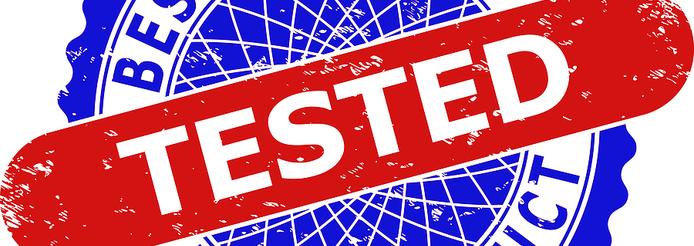"Thank you VERY much for pulling together the summary for my new Home Décor business. The information provided was very detailed and insightful. Your efforts on our behalf will certainly help us as we enter a new business category.”

Here’s How to Maximize Success of that Launch
For many of you, January means crunch time. It’s time to take those products that have been in development for the past year and get ready to launch them at the winter and spring trade shows. It’s time to put them out for retailer review. It’s time to make it happen in order to guarantee a good year. So how to maximize their success potential? Run them by consumers. Get consumer approval that you can take to retailers as proof that consumers are ready and waiting for your new products.
How do you get consumer approval?
Talk to us. We’ll test your new products quickly and efficiently with targeted consumers. We’ll tell you which products consumers want and which ones aren’t going to move. We’ll tell you the strengths and weaknesses of everything in your pipeline, including winners and losers. You can set the losers aside and use our findings to make the winners stronger. Our findings will show you how to best market your products and what features and benefits to highlight that are most salient to consumers and will trigger purhase.
Show your retailers that your new products have earned their shelf space by sharing the data that shows your products found stronger consumer demand than what the retailer currently sells among consumers who shop their store and have purchased the category in the past six months. That’s how strong products gain shelf space against proven sellers and that’s how you gain retailer confidence in your company’s prowess.
Does your company currently NOT test new products with consumers?
We’ve found that many companies don’t test products with consumers due to a variety of unfounded fears.
We will help you dispel those fears now so that you can move forward to new product success. Typical reasons why companies don’t do consumer research:
- We don’t need consumer input, we are experts in our category
- That’s right, you are experts and that’s why you need consumer input. Consumers aren’t experts and their needs vary. They don’t all need the best bells and whistles and the importance they place on product features and pricing may be very different than the way you see it. Also, as experts, it is very easy for your expertise to overlook basics that consumers don’t understand. Further, your expertise may be limited to the current marketplace ...consumers are ever-evolving, needs are ever-changing...Covid is just one of the many things that have impacted changing consumer needs. To stay AHEAD, consumer listening is critical.
- Our product development schedule doesn’t have time in it for research.
- Our studies do not stop the product development process, our work can happen simultaneously to it. From receipt of concept imagery we typically deliver results is only 3 weeks.
- We don’t believe in research.
- To us, that’s like hearing someone say we don’t believe in hammers. Research should not mandate your decisions - it is simply a tool (one of many you have) that brings greater insight and understanding to your current knowledge base. Research fosters fact-based decision making, rather than gut-instinct calls.
- Our job is to lead consumers, not to follow them.
- This is a comment we’ve heard many times. It is great that you have a vision for your brand and it is great that creativity is leading the way for you. And if every product you put out there is a success, then you have a hot hand and you probably don’t need research, at least not now. But chances are that not every product is a huge success and therefore you will benefit from consumer feedback. If you prevent even one flop from taking up resources, the research will have paid for itself many times over. Which brings us to the next question/fear...
- We don't see a clear return on investment in research.
- Design Research has decades of product testing experience. Sales analysis of products we have tested show an average of THREE TIMES GREATER SALES than comparable products that were introduced without being tested. FURTHER, that does not take into account the products our research discovered were NOT market worthy and eliminated from introduction. Think of the savings in NOT manufacuring a product that will fail in market. Research saves concrete dollars - as well as retail partner relationships.
- We can’t afford research.
- How much does it cost you to create a product? Consider the creative and management time, the manufacturing costs, shipping, packaging, labeling, promotional support and materials. Many products cost hundreds of thousands to millions of dollars to bring to market. Research costs a tiny fraction of that. You spend more money on insuring all aspects of your operations. But if you aren’t doing research, you aren’t insuring your future. Research is the only insurance investment that brings you a return on investment.
Want to learn more? Call 609.896.1108 or email us today Rick@designres.com We’re always happy to talk about how we can help you grow your business.



